Note: (Updated 28mar16: Since republishing this article Mitch Weber passed away March 26, 2016. Cancer was the culprit.) This interview first ran in Telemark Skier Magazine #8 in 2006, near the peak of the websites popularity. Since then Telemark Tips and the associated forum, Telemark Talk ceased publishing on the world wide web. The forum was relaunched in 2014 under new ownership.
For tele to break through to the next level, all of us in the freeheel and backcountry skiing media need to refocus, away from the prior emphasis on the mobility aspects of our gear, and instead do a much better job of letting everyone know how much fun we have making telemark turns, they will then see that they want to be a part of it.
— Mitch Weber
Craig Dostie: Is telemark a turn, a sport or something else?
Mitch Weber: Of course in the 1970s the telemark turn remerged from the shadows of ski history as a viable approach to getting around on the skinny, edgeless cross-country skis that were then the standard for backcountry ski touring. Our tele turn was a means to an end. As time went on more and more backcountry skiers began to hit the resorts to “practice” their tele turns. Inevitably, these skiers discovered the stoke of the turn itself. What began as a mobility solution evolved into something much deeper and more meaningful, an endless quest for that soulful feeling of exhilaration one gets only from the best of the rhythm and balance sports such as surfing, snowboarding, skateboarding and telemark skiing.
CD: How and why did Telemarktips get its start?
In my view back then, the sport of telemark skiing was woefully underserved by the print media. Our sport was changing so fast, largely as a result of gear innovations such as plastic boots and fat, shaped skis. As a result I had some things I wanted to say and I wanted to share some stuff I had learned over the previous 15 years or so, hence the name of what began as a hobby site: Telemark Tips.
A few months into the project the number of visitors to the site began to spiral upward, it became very apparent that there was real interest in a telemark-specific media outlet. One day, contemplating all of this while sitting in the sun on Main Beach in Laguna , I wondered to myself what would happen if I rallied my buds and produced a site with fresh content pretty much every day, an online magazine that reflected the sport as we enjoyed it ourselves. Not just about backcountry tele skiing, but about tele skiing as it was evolving at the resorts and in the bc… tele skiing for the pure stoke of the turn. The implementation of this concept, in combination with the demise of an already established but small online telemark community that migrated to our fledgling website, formed the basis of today’s Telemarktips.com.
CD: What are the necessary ingredients for a thriving online community?
CD: Do you see a danger in the anonymity of the Internet?
MW: No, I do not. Anonymity has always been an important part of free speech. Some of the most controversial and thought-provoking speech has historically been published under the cover of anonymity. Thomas Paine’s Common Sense is generally credited with getting Americans to first consider secession from Great Britain, yet this great and important work was first published under the pseudonym “An Englishman.”
James Madison and Alexander Hamilton published the Federalist Papers under the joint pseudonym “Publius.”
During the McCarthy era many blacklisted writers continued to work under fictitious names. More recently, the United States Supreme Court has consistently held that the First Amendment protects anonymous and pseudonymous speech. The whole concept of “dangerous” free speech frightens me for the future of our country, as it should all of us.
CD: Is there a greater propensity for negativity on the Internet?
MW: Hate it or love it, the internet is a reflection of life itself. The expressions of negativity on our forum tend to be memorable because we are not used to seeing such things in print. Frankly, I am almost daily more shocked by all the “attaboys” and “(blank) customer service rules!” posts. There is an old maxim in retail that says “one happy customer might tell one friend, while one unhappy customer will tell at least 10 friends.” On our Forum that accepted rule of thumb has been turned on its head. But in a way all these questions that focus on our Forum are kind of off the mark, they are indicative of a basic misunderstanding of the nature of Telemarktips.com and our audience.
Our Forum is not the site. It’s just one component of the Telemarktips.com Online Magazine, albeit a busy one. Last month, in the 30 days of November 2005, the Telemarktips website itself drew approximately 60,000 unique visitors, our Forum drew about 35,000. While many Forum visitors come in through the “front door” of Telemarktips, many also do not, having bookmarked the Forum index page. Therefore the disparity is even greater than the nearly two to one indicated by our separate server reports. A lot more folks come to Telemarktips to read the site content than click in to peruse the chat, as busy, compelling and addictive as our Forum has become.
CD: Do you think the Internet’s ability to quickly publicize information overruns the ability to verify it?
The best way for the industry to counter rumor and speculation on the web is to be proactive, to refuse to hide, meet the web head-on with facts, but in a non-confrontational manner. Many folks in the industry are afraid to post on these forums and that is really too bad. They are missing out on an incredibly valuable opportunity to connect directly with core users who are themselves what “Tipping Point” author Malcolm Gladwell called “connectors and mavens.” These are the people who want to know everything about their sport, and to whom their friends and others look to for advice. Communicating successfully on web forums is not that hard, you just have to remember these five words: be humble and don’t argue. Oh, and avoid using the language of promotion, instead be informative and helpful.
CD: How do we grow the sport? What’s necessary to break through to the next level?
MW: I used to worry about this a lot. Just like I used to worry (and this is going to sound funny) about how to get better search engine recognition for Telemarktips. I used to do all this stuff, special meta tags, regular search engine submissions, tweaks here and there, link exchanges, etc., etc. After a couple of years of very limited success I said to heck with it and decided to forego all that and just concentrate on putting up relevant content. Within six months our rankings began to climb. A year later if you typed in “telemark” on Google or Yahoo we were the first return. The lesson here would seem to be that trying too hard to “grow the sport” might not be the best strategy either.
In the early days of Telemarktips I wrote to Adam Sherman of Igneous Skis fame to ask him how he managed to get such great press, including a “Dewar’s Profile” for Dewar’s Scotch whisky, one of the longest running ad campaigns in history and one which highlighted “doers” in various endeavors. I wanted to know his secret.
Sherman wrote back, “When the New York ad agency called I thought it was one of my friends playing a joke on me…. As far as the ‘secret,’ all I can offer you is this: Just let everyone know that you are having fun, and that they want to be a part of it.”
For tele to break through to the next level, all of us in the freeheel and backcountry skiing media need to refocus, away from the prior emphasis on the mobility aspects of our gear, and instead do a much better job of letting everyone know how much fun we have making telemark turns, they will then see that they want to be a part of it.
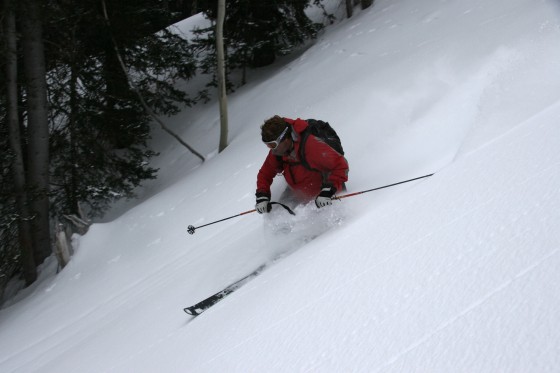
© 2006

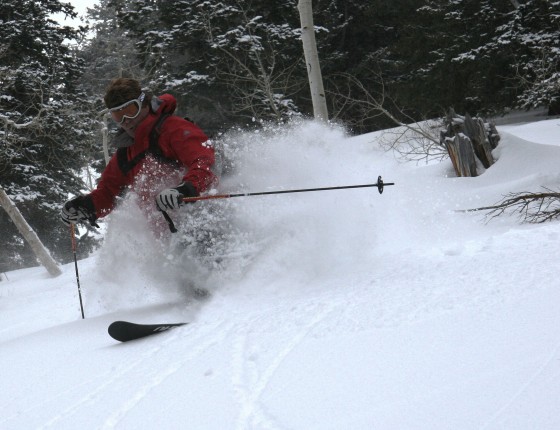
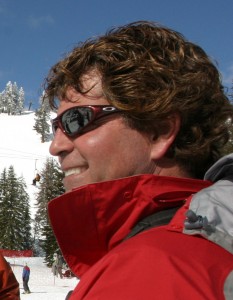
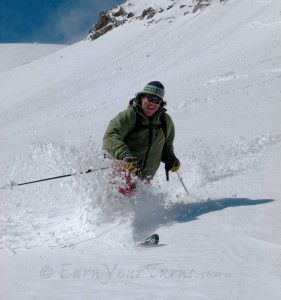
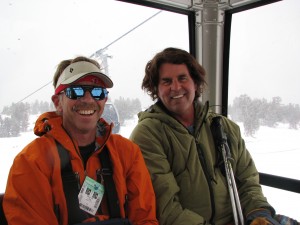
4 comments
Skip to comment form
Mitch did untold good for telemarking. He was responsive to emails I sent him. Great contributor.
His last remark though in someway signalled the slow death of tele:
“…all of us in the freeheel and backcountry skiing media need to refocus, away from the prior emphasis on the mobility aspects of our gear, and instead do a much better job of letting everyone know how much fun we have making telemark turns, they will then see that they want to be a part of it.”
As our friends in AT gear cruised off with Dynafit rigs much lighter (pounds per foot lighter!) than our tele gear, so did potential future tele skiers. So many diehard tele friends ditched when they saw NTN rigs besides TLT boots and bindings. But I don’t think they (or me) left tele. The industry left us.
“instead do a much better job of letting everyone know how much fun we have making telemark turns, they will then see that they want to be a part of it.”
Exactly! As soon as you make it about ease or weight AT wins. This has to be about how much fun it is.
man, for a second there I though Mitch had reappeared!
I hope that he’s doing well, wherever he is…
RIP Mitch. Enjoy those deep and endless turns in the sky.